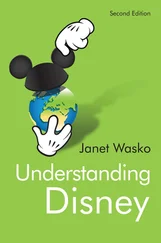This explanation for masturbation—as a pure physical release—may seem a bit clinical and devoid of other elements typically comprising a sexual experience. Yet it is important to keep in mind some of the distinctions made in chapter 2—namely, that one can have physical arousal (e.g., gain an erection, have lubrication, an orgasm) without necessarily having, for example, sexual attraction to (or desire for) others.
Such quotes also suggest that the sensation of masturbation experienced by some asexual people may not be particularly “pleasurable,” at least in not in an intensely “sexual” way. It may still feel good, to some degree, in the same way that releasing any tension and buildup feels good to people (i.e., as a relief). And, as mentioned, some sexual people may masturbate, at times, for this reason: merely to release tension and pelvic congestion, and less for the intense sexual pleasure of it.
For other asexual people, there may still be sexual feelings and/or intense physical pleasure, similar to how most sexual people feel when masturbating or having sex with a partner. Thus, another reason why asexual people masturbate is relatively straightforward and similar to why sexual people do it: for physical pleasure. At this point, however, we do not have good data on what percentage of asexual people derive intense (sexual) pleasure from masturbation. I expect that some asexual people do, and if so, this would again suggest that asexuality is a diverse phenomenon: some asexual people do not masturbate, some masturbate with “sexual” pleasure, and some masturbate without much sexual pleasure. If it is true that some asexual people do still experience intense (sexual) pleasure, it is again important to keep in mind some of the basic distinctions raised earlier: that one can have a deeply (subjective) sexually pleasurable feeling of arousal without necessarily having a deep sexual connection with or attraction to partners (in other words, one can have that sexual feeling of arousal and still be “asexual” as I define it; see chapter 2). Relatedly, it is certainly true that sexual people sometimes have sex and masturbate without necessarily connecting the sexual pleasure to anyone specifically. So, for example, sexual men and women may enjoy the sheer physical sensation of intercourse without necessarily being attracted to their partners. A very sexually experienced gay man once recounted to me that he enjoyed vaginal intercourse with women more than anal intercourse with men, because of the sheer physical sensation of his penis being stimulated by the tubular architecture of the vagina, along with the lubrication it provides when a woman is physically aroused. Thus, as we have suggested, subjective physical pleasure and sensation associated with arousal can be divorced from one’s attraction to others.
My next dumb question is one that I actually posed to an asexual man: What do asexual people masturbate to ? This was clearly a bit of an odd question for him. For most masturbators (well, okay, much of the planet), this question is relatively easy to answer. They often masturbate to a fantasy, a conjured-up image of a favorite person (or group of people), a picture, moving or otherwise, of sexual scenes. In other words, they masturbate to some sort of image or story of what they are sexually attracted to. For example, a young woman may masturbate to a story line of an erotic novel she has read, perhaps replacing the heroine with herself in the fantasy, or, as mentioned, to an image of hunky Brad Pitt. A young man may masturbate to the image of a seductively posed nude woman in a magazine or on the Internet, or, as mentioned above, to harem-like fantasies.
This is evidently not so for many asexual people who masturbate. In fact, the asexual person, perplexed, did not answer at first, and then only responded when I saw him on the next occasion, after having thought about it, and discussing it with some asexual people on the AVEN website. He suggested that many asexual people just masturbate to nothing in particular. This makes sense, as asexual people with sexual desire (or urges, but lacking sexual attraction) do not direct this desire toward anyone (or anything). So, the question of what an asexual person masturbates to is, perhaps understandably, nonsensical, or best answered with “nothing in particular” (or at least nothing of particular sexual relevance to the asexual person).
This nondirected masturbation also reinforces the idea that some, perhaps many, asexual people often do not have sexual fantasies, or at least not in the same way that sexual people usually have them. There is some research by Lori Brotto and her colleagues suggesting that some asexual people do have fantasies (Brotto et al., 2010), but it is unclear from this research whether the fantasies co-occur with masturbation, whether they are primarily “romantic,” and what function they serve (see also discussion below). Interestingly, this nondirected masturbation also reinforces the idea that masturbation in asexual people probably does not serve a “rehearsal” function that prepares them to act upon scenarios that they might encounter in real life. And why would it, given that asexual people do not need to sexually “practice” sequences of behaviors with preferred partners?
Here is a follow-up, not-so-dumb, question: What if some (i.e., a small percentage) asexual people have fantasy-based masturbation? What would this mean? In addition to understanding sexual fantasies as important for the development and rehearsal of sexual scripts, human sexuality researchers are interested in sexual fantasies because we know that their content says something about what people are truly attracted to. Sexual fantasies are more important than actual behavior—what we actually do with a partner—in this regard, because partnered behavior represents a compromise of the individuals engaged in that behavior. Fantasies often do not represent any compromise: they usually only spring from the individual’s own desires and attractions; thus, they are a (relatively) pure reflection of one’s true attractions.
Pornography contains commercially produced sexual fantasies, or at least fantasy-enhancement material. This is especially true for men. If so, the type of pornography men view and/or masturbate to should be an indicator of their attractions. Gay men are attracted to men, so, not surprisingly, they will view images of naked men or men engaged in sex. Similarly, heterosexual men are attracted to women, so they will view images of naked women, men having sex with women, or two or more women having sex together. This attraction/porn relationship can be used as a diagnostic tool of a person’s sexual orientation. If, for example, an adolescent male professes to be heterosexual and yet is found with a large stash of gay porn, the content of his stash trumps (or at least calls into question) his professed heterosexual attractions, at least as far as many sexual orientation researchers are concerned. Interestingly, this diagnostic tool can also be used to diagnose deviant sexual attractions. If a man professes to be attracted to adults but has a stash of child pornography (and little or no adult-oriented pornography), then the content of this stash can be used to help determine that the man is likely a pedophile (Seto, Cantor, & Blanchard, 2006). [24] People often make a “causal inference” between a person’s exposure to pornography and his or her sexual attractions. So people may assume that exposure to pornography causes attraction to this material. For example, it is often assumed that an adolescent boy or a young man’s exposure to child pornography causes a sexual interest in children. Theoretically, this is possible, but most sex researchers are cautious about making such causal inferences, as they know that when two events co-occur—a correlation—this is not evidence of causation. When a correlation of this kind occurs, especially repeatedly (e.g., a man with a large stash of child porn collected over many different years), this may merely be good evidence that an attraction to this material occurs, and that we need to be alerted to that fact.
Читать дальше












